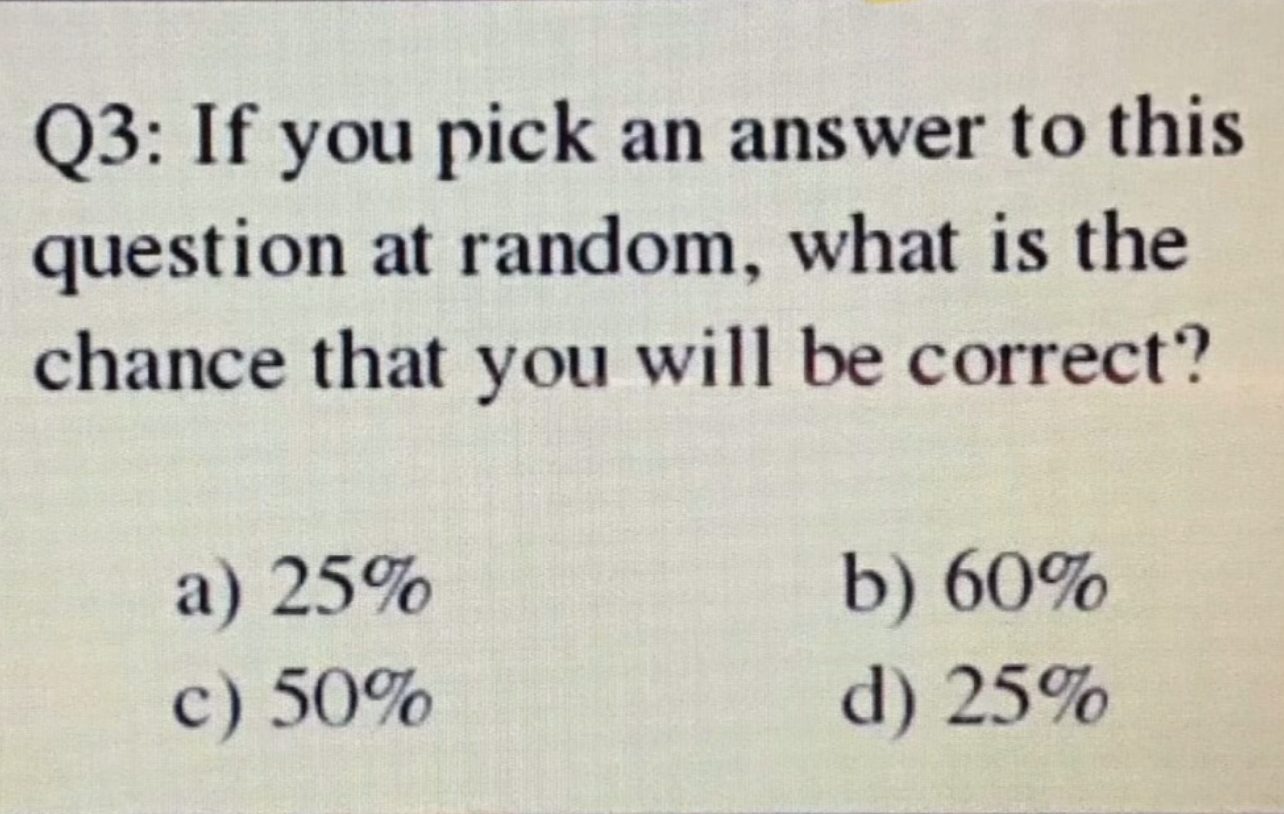This can also be used a great example of proof by contradiction: There is no correct answer in the options. Proof: Assume there was a correct answer in the options. Then it must be either 25%, 50% or 60%. Now we make a case distinction.
(A) Assume it was 25. Then there would be two of four correct options yielding in a probability of 50%. Therefore 50 must be the correct answer. -> contradiction.
(B) Assume it was 50. Then there would be one of four correct options yielding in a probability of 25%. Therefore the answer is 25. -> contradiction.
(C) Assume it was 60%. Since only 0,1,2,3 or 4 of the answers can be correct the probability of choosing the right answer must be one of 0% 25% 50% 75% or 100%. -> contradiction.
Because of (A), (B) and (C), it cannot be 25, 50% or 60%. -> contradiction.

